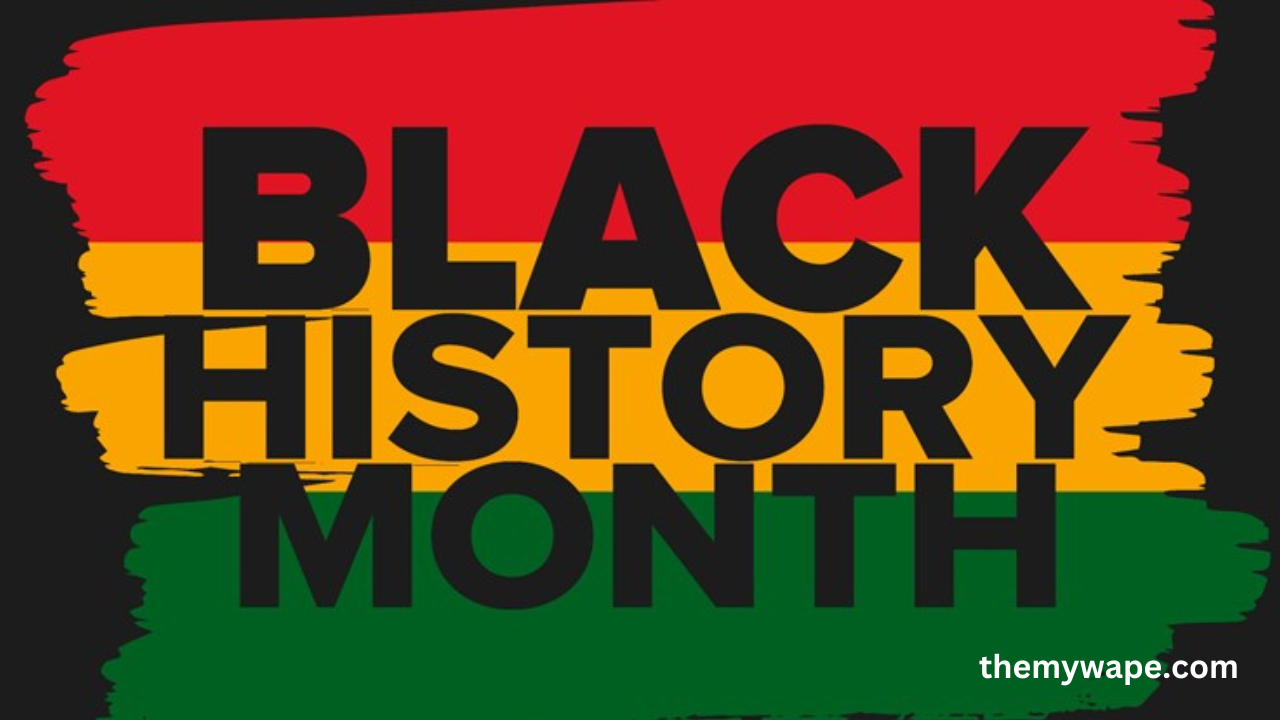Black History Month, celebrated annually in February, holds great importance as a time to honor the achievements, contributions, and struggles of African Americans throughout American history. Often abbreviated, “Black History Month Abbr NYT” refers to the way the New York Times (NYT), one of the leading news outlets, acknowledges and reports on this crucial cultural event. In this article, we will explore how the abbreviation of Black History Month is used in various contexts, including its prominence in NYT coverage and its broader significance in digital and media representation.
Introduction to Black History Month Abbr NYT
The abbreviation “Black History Month Abbr NYT” is not just a shortened form but also a reflection of how media platforms, such as the New York Times, deliver essential information about Black History Month efficiently and effectively. As digital content continues to evolve, using abbreviations in headlines and articles helps engage readers quickly while emphasizing critical events and topics.
Understanding how “Black History Month Abbr NYT” is utilized in media coverage provides insight into how this celebration is honored and publicized to a global audience. The New York Times, as a major source of information, has played a vital role in educating readers on the achievements of African Americans, raising awareness, and encouraging societal reflection. Throughout this article, we will dive into how the abbreviation of Black History Month is represented in NYT, its impact on SEO, and why it matters.
Table of Contents
The History and Evolution of Black History Month
Before exploring “Black History Month Abbr NYT” further, it’s important to first grasp the origins of Black History Month. Established by Carter G. Woodson, a historian dedicated to highlighting the achievements and historical significance of African Americans, established Black History Month, which began as “Negro History Week” in 1926. It was celebrated in February to honor the birthdays of Abraham Lincoln and Frederick Douglass, key figures in the abolition of slavery and civil rights.
Over the years, Negro History Week expanded into a full month in 1976, becoming what is now widely recognized as Black History Month. This evolution also extends to how media outlets like NYT refer to the celebration, often using abbreviations to keep the focus on the central message—acknowledging the vast contributions of African Americans to society.
Black History Month Abbr NYT in Media Coverage
The phrase “Black History Month Abbr NYT” captures how the New York Times and other media outlets use abbreviations to engage readers while ensuring comprehensive coverage. The abbreviation helps the media keep articles concise, particularly when dealing with limited headline space. But more than that, it helps the topic remain SEO-friendly, which is a crucial aspect of modern digital journalism.
At NYT, articles related to Black History Month cover various topics, from historical profiles to modern-day achievements, social justice issues, and cultural contributions. The use of the abbreviation Black History Month, or “Black History Month Abbr NYT,” simplifies the process of creating these headlines, which in turn allows the content to rank better on search engines. The importance of the abbreviation cannot be understated, as it aids in driving more traffic, especially during the month of February when interest in Black History Month peaks.
Why SEO Matters for Black History Month Abbr NYT
For news outlets like the New York Times, optimizing content for search engines is key to ensuring articles reach a broader audience. “Black History Month Abbr NYT” is a perfect example of how abbreviating a term can improve its search engine visibility. Since Black History Month is a well-searched term, using its abbreviation strategically ensures the content appears in relevant searches.
SEO for Black History Month content ensures that people seeking information about African American history, achievements, and key figures can easily access NYT articles and other media coverage. Incorporating terms like “Black History Month Abbr NYT” multiple times in an article, for instance, ensures that the piece ranks highly for related queries. This is especially crucial in the competitive digital landscape where media outlets vie for the top spot on search engines like Google.
How the New York Times Covers Black History Month
The New York Times has a long history of covering Black History Month extensively, focusing on education, activism, and stories that resonate with readers from all backgrounds. From featuring notable African American historical figures to spotlighting contemporary trailblazers, the NYT uses Black History Month as an opportunity to provide in-depth coverage of topics that matter to the African American community.
Throughout its coverage, the abbreviation “Black History Month Abbr NYT” becomes a strategic tool. It allows the publication to keep the focus on the central message while utilizing SEO tactics to ensure a broad audience can access this valuable content.
Some of the topics NYT covers during Black History Month include:
Historical retrospectives on key civil rights figures
African American cultural contributions in art, music, and literature
The ongoing fight for racial justice
Celebrations of African American inventors, scholars, and leaders
Discussions around racial inequality and systemic racism in the U.S.
By using the phrase “Black History Month Abbr NYT,” the New York Times ensures that these crucial stories are easily discoverable through digital platforms.
The Importance of Abbreviations in Digital Media
In the fast-paced digital era we live in, abbreviations have become a crucial asset for media organizations. They help simplify communication, making it easier to capture attention while maintaining clarity and focus on key topics. For example, “Black History Month Abbr NYT” helps conserve space in headlines and articles while maintaining a focus on the central topic. The use of abbreviations doesn’t diminish the importance of the subject matter—instead, it makes it more accessible to readers by catering to their search habits and time constraints.
With social media driving a large amount of traffic to media websites, concise terms like “Black History Month Abbr NYT” are key to capturing attention quickly. This tactic ensures that readers find relevant content without unnecessary delays or confusion. Search engines also favor abbreviated keywords, making it more likely for such articles to appear at the top of search results.
Black History Month (Abbr NYT) and Cultural Representation
Representation in the media is critical, especially during events like Black History Month. Abbreviations like “Black History Month Abbr NYT” may seem small, but they serve a larger purpose. They are part of the broader effort by news outlets to highlight important cultural and historical events without losing relevance in the digital space.
By featuring stories related to Black History Month, NYT helps raise awareness about African American contributions to society. The use of abbreviations ensures these stories are accessible to readers who might otherwise overlook them. Whether through features, interviews, or historical retrospectives, the NYT contributes significantly to ensuring Black History Month remains an essential part of the cultural conversation.
FAQs on Black History Month Abbr NYT
What does “Black History Month Abbr NYT” stand for?
“Black History Month Abbr NYT” refers to how the New York Times abbreviates and uses the phrase “Black History Month” in its headlines and articles, making the content concise, SEO-friendly, and engaging for readers.
Why is Black History Month abbreviated in media coverage?
Media outlets often abbreviate phrases like Black History Month to make headlines shorter and more impactful while retaining their core message. The abbreviation helps maintain reader engagement and optimize the article for search engines.
How does NYT cover Black History Month?
The New York Times covers Black History Month through various articles focusing on African American history, culture, achievements, and contemporary social issues. NYT provides in-depth features and interviews that highlight the importance of this celebration.
Why is SEO important for Black History Month articles?
SEO ensures that articles related to Black History Month reach the widest audience possible. By using keywords like “Black History Month Abbr NYT,” media outlets can rank higher on search engines, driving more traffic to their content.
How does NYT contribute to Black History Month awareness?
The New York Times plays a significant role in raising awareness by publishing well-researched, engaging articles that educate readers about African American history and achievements. The use of abbreviations like “Black History Month Abbr NYT” helps make these articles more discoverable online.
Conclusion on Black History Month Abbr NYT
The abbreviation “Black History Month Abbr NYT” may seem simple, but it is an essential tool for ensuring the visibility of Black History Month content in the digital age. As the New York Times and other media outlets strive to educate readers on African American history and culture, SEO tactics like using abbreviations ensure these stories are accessible to a global audience.
Black History Month is an important annual celebration that reminds us of the achievements and contributions of African Americans throughout history. By incorporating the abbreviation “Black History Month Abbr NYT” into their coverage, the New York Times helps ensure that this vital cultural event remains relevant and widely recognized. As digital journalism continues to evolve, the use of keywords and abbreviations will remain central to how we access and engage with essential content.
You can see the latest updates on : MyWape



